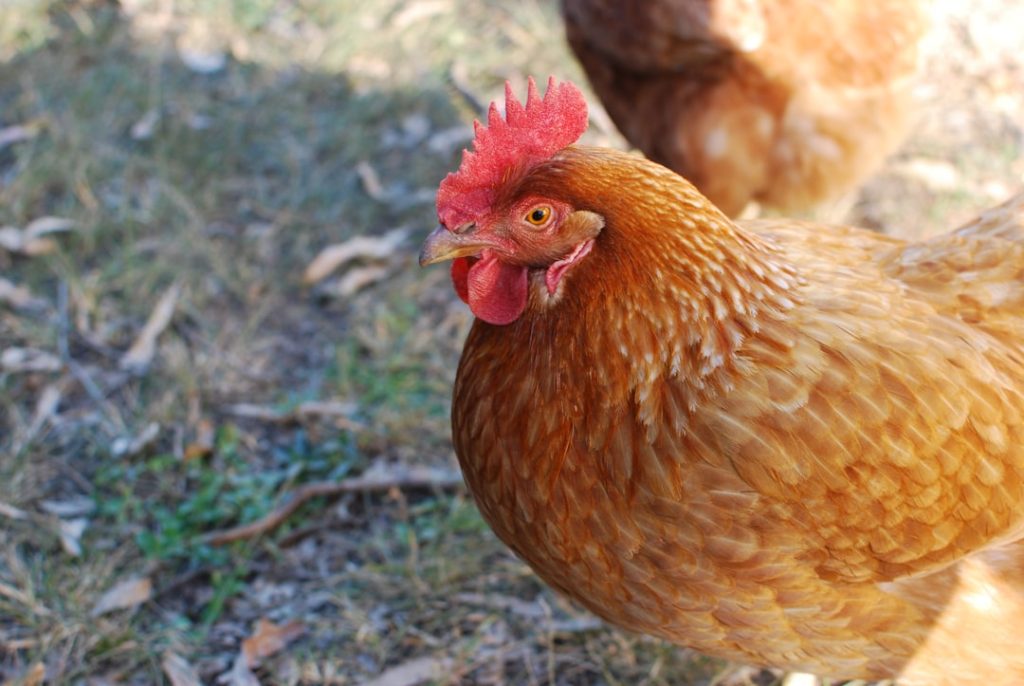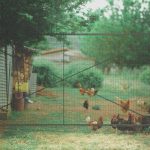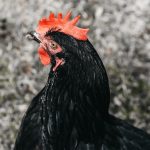The coexistence of chickens and dogs in the same environment presents unique challenges for pet owners and farmers. A common issue that arises is chickens consuming dog food, which can lead to several problems. These include potential malnutrition for dogs, overfeeding of chickens, and possible conflicts between the two species.
Implementing effective methods to prevent chickens from accessing dog food is crucial for maintaining the health and well-being of both animals and fostering a harmonious living environment. This article will examine the behavior patterns of chickens and dogs, as well as various strategies for managing their interactions and ensuring proper nutrition for each animal. By understanding these dynamics and implementing appropriate solutions, pet owners and farmers can create a more balanced and sustainable living arrangement for their chickens and dogs.
Table of Contents
- 1 Understanding the behavior of chickens and dogs
- 2 Strategies for keeping chickens away from dog food
- 3 Designing a separate feeding area for dogs
- 4 Utilizing barriers to prevent access to dog food
- 5 Training chickens to stay away from dog food
- 6 Conclusion and additional tips for managing chicken and dog interactions
- 7 FAQs
- 7.1 What are some effective ways to keep chickens out of dog food?
- 7.2 Why is it important to keep chickens out of dog food?
- 7.3 Are there any natural deterrents to keep chickens away from dog food?
- 7.4 Can training be effective in keeping chickens out of dog food?
- 7.5 What are the potential risks of chickens consuming dog food?
Key Takeaways
- Chickens are naturally attracted to dog food, which can lead to health issues for both chickens and dogs
- Chickens are curious and will often explore new areas, including where dog food is kept
- Keeping chickens away from dog food can be achieved through various strategies and training methods
- Designing a separate feeding area for dogs can help prevent chickens from accessing their food
- Utilizing barriers such as fences or elevated feeding stations can effectively keep chickens away from dog food
Understanding the behavior of chickens and dogs
Understanding the Behaviors of Chickens and Dogs
On the other hand, dogs are often protective of their food and may become agitated or aggressive when other animals, such as chickens, approach their feeding area. Understanding these behaviors is crucial for developing effective strategies to keep chickens away from dog food. By recognizing the natural tendencies of both species, pet owners and farmers can implement targeted solutions to prevent access to dog food while ensuring that chickens receive adequate nutrition.
The Territorial Nature of Dogs and the Curiosity of Chickens
Dogs, being territorial animals, may exhibit guarding behavior around their food, which can lead to conflicts with chickens. Chickens, on the other hand, are naturally curious and will investigate any potential food source within their reach. This combination of behaviors can create a challenging dynamic when trying to manage the coexistence of chickens and dogs.
Developing Effective Strategies to Address the Issue
By gaining insight into the behavior of both animals, pet owners and farmers can develop tailored approaches to address the issue of chickens eating dog food. By understanding the motivations behind their actions, it becomes possible to implement effective strategies that cater to the specific needs and behaviors of each species.
Strategies for keeping chickens away from dog food
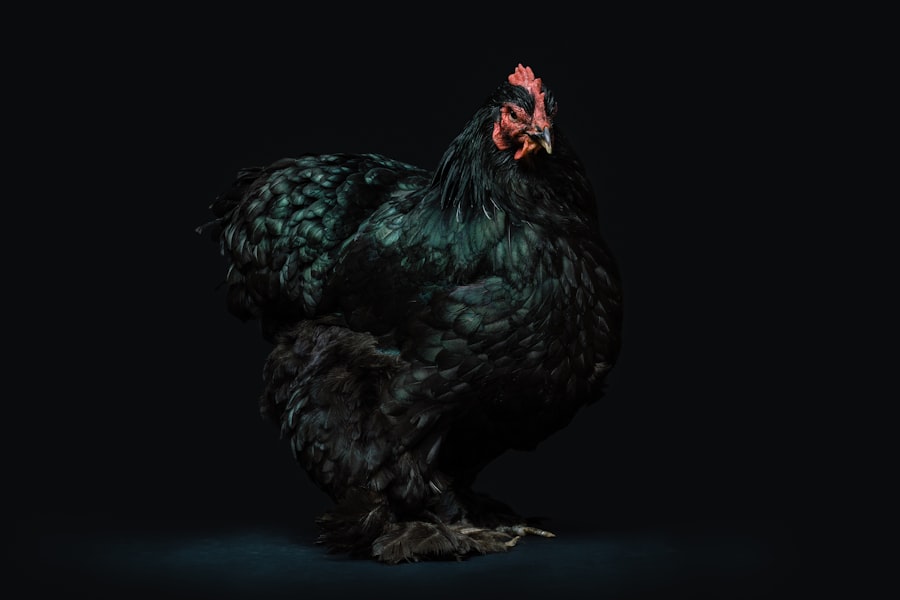
One effective strategy for keeping chickens away from dog food is to establish a designated feeding area for each animal. By creating separate spaces for feeding, pet owners and farmers can minimize the likelihood of chickens accessing the dog’s food. This can be achieved by placing the dog’s food in an elevated or enclosed area that is inaccessible to chickens, such as a raised platform or inside a secure feeding station.
Additionally, scheduling regular feeding times for both animals can help to reduce competition for food resources and discourage chickens from seeking out the dog’s food. Another approach is to utilize specialized feeders designed specifically for dogs, which feature mechanisms that prevent access by other animals, such as chickens. These feeders may include weighted lids, automatic closing mechanisms, or elevated platforms that only allow access to the intended animal.
By investing in these types of feeders, pet owners and farmers can effectively manage the feeding process and minimize the risk of chickens consuming dog food.
Designing a separate feeding area for dogs
Creating a separate feeding area for dogs is a practical solution for preventing chickens from accessing their food. This can be achieved by designating a specific location for the dog’s feeding station, such as a corner of the yard or a designated area within the home. By establishing a dedicated space for feeding, pet owners and farmers can effectively control access to the dog’s food and minimize the risk of interference by chickens.
In addition to designating a separate feeding area, pet owners and farmers can also consider using specialized feeding stations or bowls that are specifically designed to deter other animals, such as chickens, from accessing the dog’s food. These may include elevated feeders, automatic closing mechanisms, or weighted lids that only allow access to the intended animal. By investing in these types of feeding solutions, pet owners and farmers can effectively manage the feeding process and ensure that dogs receive their meals without interference from other animals.
Utilizing barriers to prevent access to dog food
Another effective strategy for keeping chickens away from dog food is to utilize physical barriers to prevent access. This can be achieved by installing fencing or enclosures around the dog’s feeding area to create a secure boundary that is inaccessible to chickens. Additionally, using gates or doors with latches can further restrict access and prevent unwanted entry by other animals.
In addition to fencing, pet owners and farmers can also consider using deterrents such as motion-activated sprinklers or sound devices to discourage chickens from approaching the dog’s feeding area. These types of deterrents can help to create a negative association with the feeding area, dissuading chickens from attempting to access the dog’s food.
Training chickens to stay away from dog food
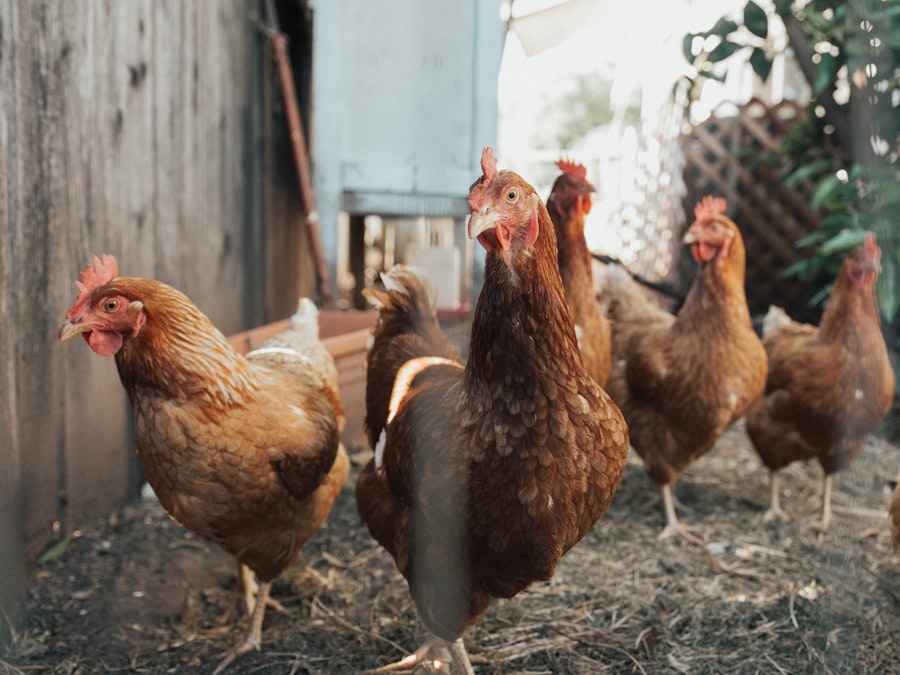
Positive Reinforcement Training
One effective method is to use positive reinforcement training, where chickens are rewarded for staying away from the dog’s feeding area. By using treats or other incentives, pet owners and farmers can encourage chickens to associate staying away from the dog’s food with a positive outcome. This approach not only helps to manage interactions but also strengthens the bond between humans and chickens.
Aversive Conditioning Techniques
Another method is to use aversive conditioning techniques, such as creating loud noises or using deterrent sprays when chickens approach the dog’s feeding area. By creating a negative association with accessing the dog’s food, chickens can learn to avoid the feeding area altogether. This approach can be effective in deterring chickens from accessing the dog’s food, but it requires careful implementation to avoid causing undue stress or anxiety.
Benefits of Training
By training chickens to stay away from dog food, pet owners and farmers can reap several benefits. This approach can help to reduce conflicts between dogs and chickens, prevent the spread of disease, and promote a more harmonious and peaceful living environment for all animals involved.
Conclusion and additional tips for managing chicken and dog interactions
In conclusion, managing the cohabitation of chickens and dogs requires an understanding of their behavior and implementing targeted strategies to prevent access to dog food. By creating separate feeding areas for dogs, utilizing barriers, and training chickens to stay away from dog food, pet owners and farmers can effectively manage their interactions and ensure that each animal receives appropriate nutrition without interference from the other. Additional tips for managing chicken and dog interactions include providing ample space for both animals to roam freely, offering enrichment activities to keep them occupied, and supervising their interactions when they are in close proximity.
By taking proactive measures and implementing effective strategies, pet owners and farmers can promote a harmonious living environment for both chickens and dogs while minimizing potential conflicts over food resources.
If you’re looking for ways to keep chickens out of your dog’s food, you may also be interested in learning about the importance of having a properly sized coop for your chickens. Check out this article on how big a coop needs to be for a chicken to ensure your feathered friends have enough space to roam and stay happy and healthy.
FAQs
What are some effective ways to keep chickens out of dog food?
Some effective ways to keep chickens out of dog food include using elevated feeding stations, using automatic feeders with sensors, and creating physical barriers such as chicken wire or fencing.
Why is it important to keep chickens out of dog food?
It is important to keep chickens out of dog food to prevent the spread of diseases and parasites between the two animals. Additionally, chickens consuming dog food can lead to nutritional imbalances and health issues.
Are there any natural deterrents to keep chickens away from dog food?
Yes, there are natural deterrents such as citrus peels, cayenne pepper, and vinegar that can be used to keep chickens away from dog food. These items can be sprinkled around the feeding area to discourage chickens from approaching.
Can training be effective in keeping chickens out of dog food?
Yes, training can be effective in keeping chickens out of dog food. By consistently reinforcing boundaries and using positive reinforcement, chickens can be trained to stay away from dog food areas.
What are the potential risks of chickens consuming dog food?
The potential risks of chickens consuming dog food include nutritional imbalances, digestive issues, and the spread of diseases and parasites between chickens and dogs. It is important to keep the two animals’ diets separate to maintain their health and well-being.
Meet Walter, the feathered-friend fanatic of Florida! Nestled in the sunshine state, Walter struts through life with his feathered companions, clucking his way to happiness. With a coop that’s fancier than a five-star hotel, he’s the Don Juan of the chicken world. When he’s not teaching his hens to do the cha-cha, you’ll find him in a heated debate with his prized rooster, Sir Clucks-a-Lot. Walter’s poultry passion is no yolk; he’s the sunny-side-up guy you never knew you needed in your flock of friends!

